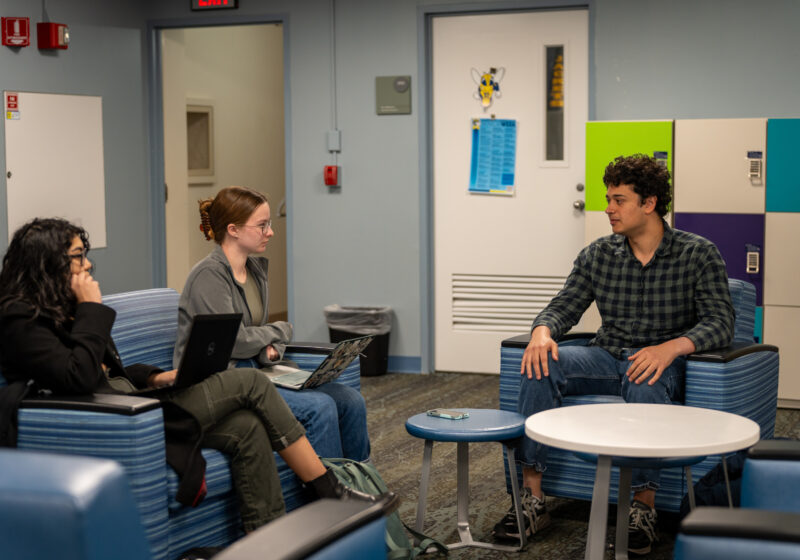University Facilities’ recent decrease of temperatures in academic and residence halls will save UR an estimated $65,000 per degree Fahrenheit per year on the River Campus alone. Combined with similar measures implemented at UR Medical Center, the University is aiming to save an additional $100,000 per degree one part of a concerted effort to slim budgets in a difficult economy.
‘For the most part, with the economic times and with global warming and the utility crisis being so volatile, people are embracing this and are ready to do their part,” Assistant Director for Central Utilities Lisa Glover-Henderson said.
Glover-Henderson is the project manager of Facilities’ energy conservation campaign and is helping to evaluate where UR can sustainably and permanently reduce excess costs. By the end of this week, academic buildings’ temperatures will have been reduced from 70-72 degrees Fahrenheit to 68 degrees. According to Senior Vice President for Administration and Finance Ronald Paprocki, the most expensive buildings at UR contain scientific equipment, such as at URMC’s facilities. Hutchison Hall is the River Campus’s most costly building.
Even though residence halls are also cooling down slightly, Glover-Henderson emphasized the greater caution Facilities and Residential Life will take to moderate these temperature setbacks.
‘We’re applying as much common sense to these setbacks as possible,” Henderson said. ‘We’re very conscious that those are people’s homes, and it’s not a business that runs 8 [a.m.] to 5 [p.m.]… The intention is not to go any more than [a half-degree to a degree]. That will make a big difference we’ll see it on the meter.”
As of Tuesday, Feb. 17, thermostats in four residential halls Hoeing Hall, Tiernan Hall, Lovejoy Hall and Gilbert Hall were lowered by less than a degree. These changes in the dormitories are subject to further review, tailoring temperatures to fit exceptions in older buildings.
The primary focus of the policy change is on the River Campus and URMC. Director of Facilities at Eastman SchoolKevin Gibson said that Eastman will consider similar setbacks after evaluating the appropriate conditions unique to its buildings and instruments.
So far, what the administration hopes to shave off of its annual utility bill is only a fraction of its $36 million expenses for energy. UR will continue to pursue additional cost-reduction, sustainable strategies while encouraging the University community to make an individualized effort to power down laptops, shut off lights and wear a sweater before raising the thermostat.
‘Every little bit that we’re doing is going to add to the savings and all of the things behind the scenes that people don’t see we’re doing,” Henderson said.
SA senator and junior Eric Weissmann reacted to the University’s changes, and what remains to be done.
‘I know that I was personally frustrated that while students were being asked to “do their part’ by wearing an extra layer to stay warm when temperatures were decreased, some buildings leave their lights on all night long,” Weissmann said. ‘Overall, though, I am happy to do my part by being a little cooler if it means saving money and energy in this difficult economy. I just want to make sure that students aren’t the only ones doing their part.”
Over winter break, UR saved $18,000 by shutting off all heating on the Eastman Quadrangle and in residential halls. Currently, Director of River Campus Facilities Jeff Foster is conducting a lighting survey that will identify UR’s opportunities to install light motion sensors that will shut off unnecessary light in hallways and common areas.
The Students’ Association Projects and Services committee is simultaneously launching a review of unnecessary lighting at night.
In addition, Facilities staff are inspecting ventilation fans to ensure they are providing optimal air flow to the space. Finally, staff are reprogramming air systems using ‘free-cooling techniques,” to take advantage of outdoor air available on days with milder temperatures, a technique that further reduces energy costs. According to Henderson, building occupants shouldn’t feel any change.
Facilities first realized its potential to lower temperatures through its cost reduction suggestion program.
Paprocki explained the saved money will benefit the utility budgets of University divisions, such as Strong Memorial Hospital and Residential Life, which are dealing with rising energy costs in tighter times.
‘Like all colleges and universities, we are trying to realize savings wherever we can while preserving our core,” Paprocki said. ‘We will not make cuts that degrade safety, security or the quality of our programs.”
Leber is a member of
the class of 2011.

